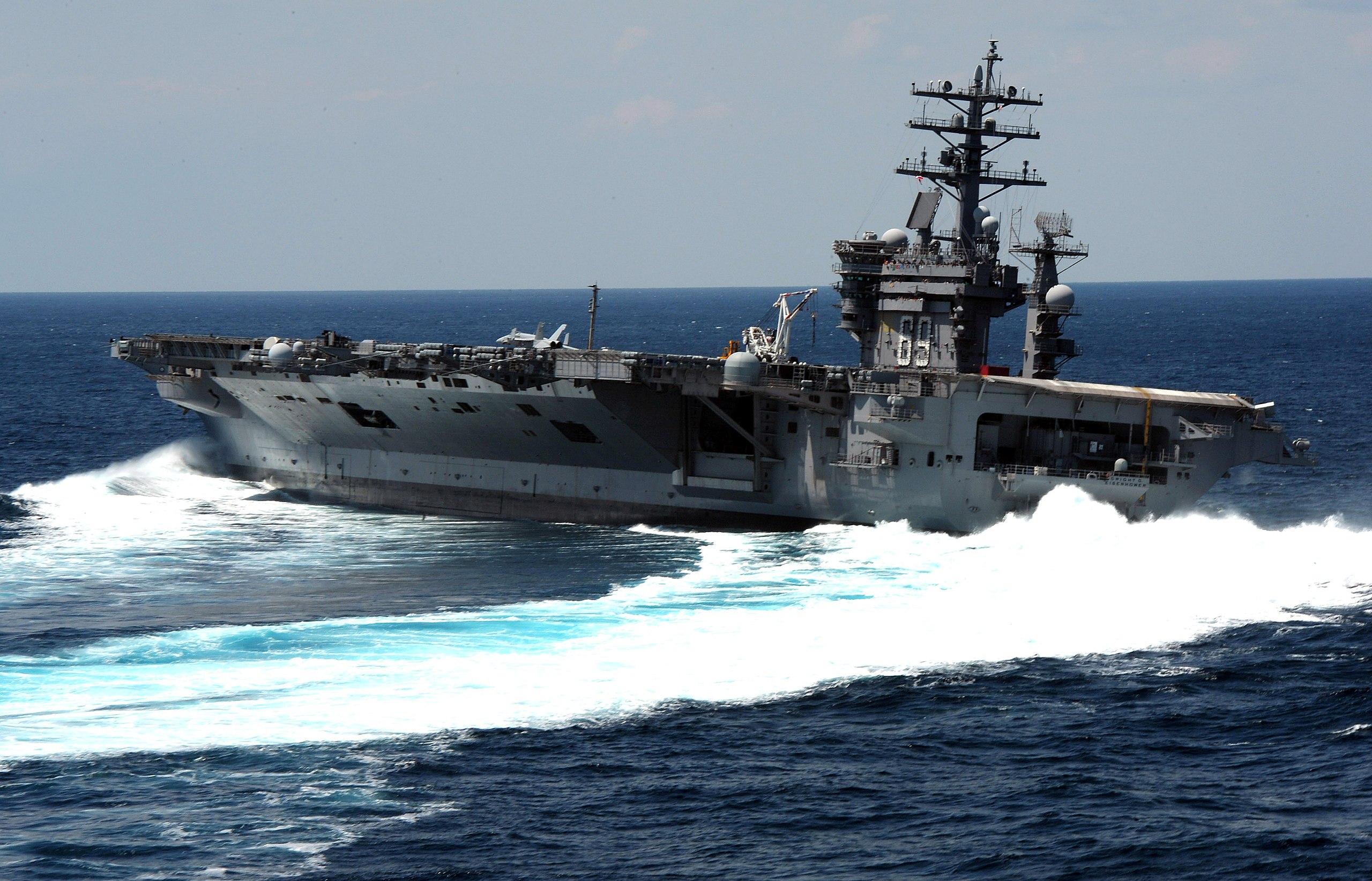The Nimitz-class aircraft carriers have carved an enduring legacy in the annals of U.S. naval history, leaving an indelible mark on American military power projection over the past four decades. These carriers, named in honor of the revered Admiral Chester W. Nimitz, have been pivotal in countless crises and conflicts involving the United States since their commissioning in 1975.
During their construction, the Nimitz-class carriers represented a remarkable feat of engineering, standing as the largest warships ever built at the time. Though they have been succeeded by the technologically advanced Ford-class carriers, the Nimitz carriers continue to serve as the backbone of the U.S. Navy’s carrier force, with many expected to remain in active service for fifty years or more.

The Genesis of the Nimitz-Class Carriers
The origins of the Nimitz-class carriers can be traced back to the mid-1960s when the U.S. Navy embarked on an ambitious endeavor to expand its nuclear propulsion capabilities across the fleet. The commissioning of the USS Enterprise, the first nuclear-powered aircraft carrier, in 1961 marked a significant milestone in this pursuit. As older carriers were phased out, the decision was made to transition to nuclear power for future ships, driven by Secretary of Defense Robert McNamara’s advocacy for the cost-effectiveness of nuclear carriers over their operational lifetimes.
This vision culminated in the creation of the Nimitz-class carriers. The lead ship of the class was laid down on June 22, 1968, and it built upon the Navy’s prior experience with supercarriers like the USS Enterprise. The Nimitz-class carriers retained the distinctive features of their predecessors, including an angled flight deck, island superstructure, and four steam-powered catapults capable of launching aircraft at a rate of four planes per minute. These massive vessels typically have over 5,000 personnel assigned to them, with around three thousand on the ship and an additional two thousand in the air wing and various support positions.

One of the primary advantages of nuclear power was the significantly lower operating costs it offered. Although officially limited to a maximum speed of approximately thirty-plus knots, these carriers were rumored to possess even greater speed capabilities. Nimitz and her sister ships demonstrated the ability to accelerate and decelerate rapidly, sustaining high speeds indefinitely. With two Westinghouse A4W reactors generating a combined 190 megawatts of power, enough to supply 47,500 American homes, nuclear propulsion also extended the carrier battle group’s operational endurance by reducing the need for frequent refueling.
The Air Wing: The Carrier’s Strength
The true strength of the carrier lies in its air wing. During the Cold War, a typical carrier air wing consisted of a formidable array of aircraft, including F-14 Tomcat air superiority fighters, F/A-18 Hornet multi-role fighters, A-6 Intruder attack bombers, E-2 Hawkeye airborne early warning and control planes, S-3A Viking anti-submarine planes, EA-6B Prowler electronic warfare aircraft, and SH-3 anti-submarine helicopters. Depending on the carrier and mission, these Nimitz-class carriers typically carried between eighty-five and ninety aircraft.

Today, the carrier air wing composition has evolved. The F-14 Tomcat has been retired and replaced by the F/A-18E/F Super Hornet. The A-6 Intruder was retired without a direct replacement following the cancellation of the A-12 Avenger carrier stealth bomber program in 1991. The S-3A Viking was phased out in the 2000s, and the EA-6B Prowler was succeeded by the EA-18G Growler electronic attack aircraft. These changes have resulted in a smaller carrier air wing comprising approximately sixty aircraft, without dedicated fleet air defense, long-range strike, or anti-submarine warfare platforms.
Enduring Legacy
Over more than three decades, ten Nimitz-class carriers were constructed. The final ship of the class, the George H.W. Bush, incorporated the latest technological advancements, including a fuel-efficient bulbous bow, a modernized island design, upgraded aircraft launch and recovery systems, enhanced aviation fuel storage, and handling capabilities.
The Nimitz-class carriers stand as a monumental achievement—a colossal, intricately designed, yet incredibly successful vessel. These carriers will proudly bear the Nimitz name well into the 2050s, serving for a remarkable eighty years continuously. Such longevity and performance are a testament to the dedication and expertise of the U.S. Navy and its shipbuilding teams.

In conclusion, the Nimitz-class aircraft carriers have left an enduring and remarkable legacy within the U.S. Navy, serving as vital instruments in safeguarding national security and projecting American influence across the globe. Their adaptability and enduring presence underscore their indispensable role in the nation’s military capabilities and strategic influence.





